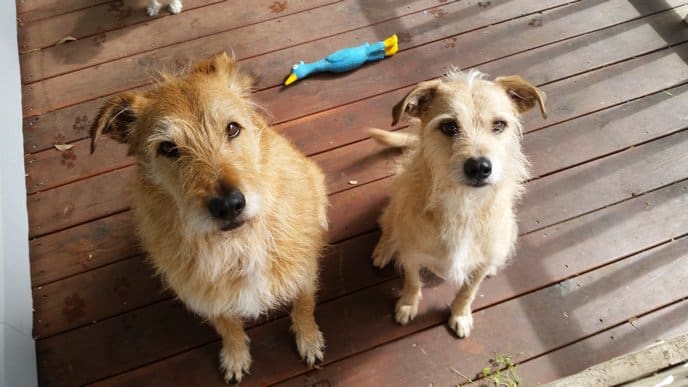Sorry if this is the fifth time in the past year that we’ve run a reminder in either the magazine, the blog, or the Facebook page, but here goes:
To give your dog the best chance of survival in a car accident, you really have to have him or her in a crate that is solidly fastened into the car, or seat-belted in a proper harness, one that has been independently crash-tested and approved by the Center for Pet Safety (CPS). For more reasons why you should use only a product that has been evaluated by this group, see our January 2015 article, “Restraining Order: Our Car Safety Harness Recommendation.” (Current subscribers can read all past issues online at no extra charge; the link is here: https://www.whole-dog-journal.com/care/collars-harnesses-leashes-muzzles/whole-dog-journals-car-safety-harness-recommendation/
).

I was at my local shelter on Saturday, helping someone adopt a dog, one I’d fostered for less than a day. A month or so ago I’d seen a photo of “Jacks” on the shelter website, and thought, “Cute! He looks like (my dog) Otto’s Mini-me!” Then I saw him in person at the shelter last week, when I walked the shelter aisles while waiting to speak to a friend who works there. Again, I thought he was such a cutie, and wondered why it was taking him so long to get snapped up. So when I had some time the other day, I went to the shelter, and signed him out as a foster dog. I took him for a walk with a friend and our combined four other dogs, and he was excellent, so well-behaved and well-socialized. I gave him a bath, took a few pictures, put them on my Facebook page, and by the next morning, heard from someone who wanted to meet him. Yay! We met, and before it was noon, we were at the shelter and the lovely young woman was adopting him. Yay!
But while I was in the lobby of the shelter, waiting for the very busy staff to go over the adoption papers with Jacks’ new owner, I started talking to another lady who was waiting for help from the shelter staff. She was from Oregon, and the day before, she told me, she was driving through the area on her way to a wedding, when she was in a traffic accident on the highway. Her car rolled over and was totaled. In the crash, she told me, she hit her head hard enough that the ambulance crew insisted that she be taken by ambulance to a local hospital. Her car was towed, and her dog, who was in a crate fastened in the back of the car, was taken to the shelter by California Highway Patrol officers. Thank goodness! The dog was only bruised, but otherwise unharmed – and so was she, as it turns out. She had been released by the hospital that morning, and one of her adult sons had picked her up from the hospital and had driven her to the shelter to get her dog. Ack! I started crying in the shelter lobby, completely caught up in her tale, and completely sympathizing with her anxiety as she waited for the staff to go get her dog out of the kennels in the back and return him to her!
As stressed as she was all night and all that morning, waiting to hear how her dog was, and WHERE he was, and waiting to get him returned to her, she was lucky; if her dog had been loose in the car, he may well have been smashed up or sustained a broken neck in the car during the crash, thrown from the car in the crash, or jumped out of one of the car’s broken windows after the crash. In the minutes immediately after the accident, had he been loose, he may have run from the car in a panic, and gotten lost or, worse, hit by another car on the highway. Thank goodness he was in a crate that was properly fastened into the car!!
If you haven’t taken steps to protect your dog in your car, please do it now! Any time your dog goes on the road with you, he should be wearing ID with current contact information, and should be either seat-belted into the car (with a proper harness) or in a crate that is properly fastened.






